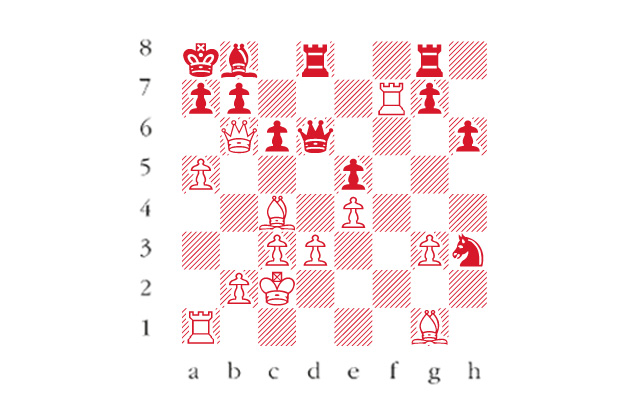It is often said that the great chessboard artist, Polish Grandmaster Akiba Rubinstein, was afflicted during tournament play by an imaginary fly, which he sought in vain to swat away. As is the nature of imaginary beings, a case in point is the A Bao A Qu, the first entry in the bible of such entities, The Book of Imaginary Beings by Jorge Luis Borges, they remain undetectable to the uninitiated. The A Bao A Qu, of course, lived invisibly on the stairway of the Tower of Victory in Chittor, Rajasthan, imperceptible to all but those who had attained perfect Nirvana. It was not widely seen.
Similarly, the offending fly was visible only to poor, distracted Rubinstein. The wise of the time saw in this the incipient lunacy which was to cause him to abandon chess for the three decades remaining to him after his last major tournament, the Chess Olympiad of Prague, 1931.
I have, though, now reached a quite different conclusion about the apparent manifestation of the intrusive airborne insect. Rubinstein may well have sunk into an inner immigration of the mind from the early 1930s, but the fly was, I believe, not a portent of mental retreat to come. It was, in fact, the symptom of a physical condition, posterior vitreous detachment, whereby the jelly-like membrane of the eye detaches itself from the retina and black specks appear to float across the eye, giving the impression that an importunate fly was hovering around one’s head.
This week, two samples of Rubinstein’s play at its best.
Rubinstein-Hromadka; Mährisch Ostrau 1923; King’s Gambit
1 e4 e5 2 f4 For a great strategist, such as Rubinstein, reverting to this venerable 19th-century favourite might seem perverse, but Rubinstein allegedly scored over 86% with the King’s Gambit in serious tournament play. 2 … Bc5 3 Nf3 d6 4 Nc3 Nf6 5 Bc4 Nc6 6 d3 Bg4 7 h3 Bxf3 8 Qxf3 Nd4 Black has declined the gambit which he might have accepted with 2 … exf4, in the hope of a seemingly quieter life. If so, his hopes were dashed by Rubinstein’s next move which offers to enter a violent sacrificial maelstrom. 9 Qg3 Qe7 9 … Nxc2+ has been seen many times but is a forced loss for Black after 10 Kd1 Nxa1 11 Qxg7 Rf8 12 fxe5 dxe5 13 Rf1 Be7 14 Bg5 when the white attack is overwhelming. 10 fxe5 dxe5 11 Kd1 c6 12 a4 Rg8 13 Rf1 h6 Having declined the rook offered on move 9, Black now continues in overly defensive fashion. Here 13 … Qd6 is a better defence. 14 Ne2 0-0-0 Again greater activity by means of 14 … Nxe2 would slow down White’s offensive. Now Black loses time with his bishop and his king comes under fire. 15 Nxd4 Bxd4 16 c3 Bb6 17 a5 Bc7 18 Be3 Kb8 19 Kc2 Ka8 20 Rf3 Nd5 21 Bg1 Rubinstein has conceived of a grandiose plan of attack which does not involve accepting counter sacrifices from his intended victim. Nevertheless 21 exd5 was possible, e.g. 21 … cxd5 22 a6 when the opening of the Black king’s position guarantees White a powerful attack. 21 … Nf4 22 Qf2 Bb8 23 g3 Luring the knight to the edge on one side of the board so that White can deal the coup de grace on the other. 23 … Nxh3 24 Rxf7 Qd6 25 Qb6 (Diagram 1) The amazing point of Rubinstein’s strategy — White’s most powerful piece now arrives with explosive power in direct proximity to the black king. If now 25 … axb6 26 axb6+ Ba7 27 Rxa7+ Kb8 28 Rfxb7+ Kc8 29 Ba6 is terminal. 25 … Rd7 26 Bc5 Rxf7 27 Bxd6 Rf2+ 28 Qxf2 Nxf2 29 Bc5 Black resigns
Raymond Keene
Lord of the flies

issue 14 September 2013




Comments